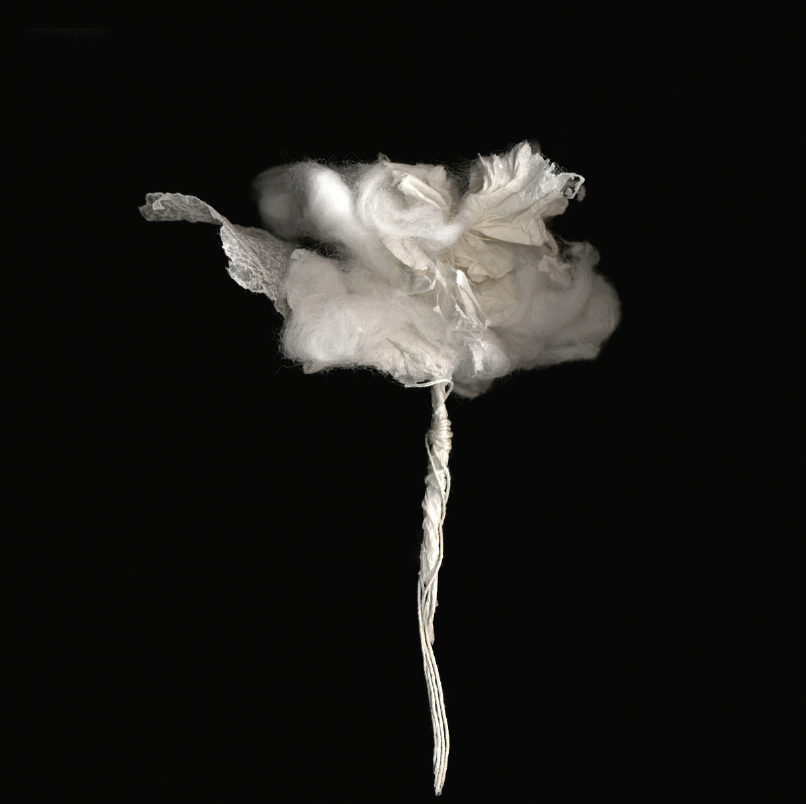Karina Kraenzle
Over the last few years, Ottawa artist Karina Kraenzle has produced, using a scanner, a number of intense photograph exhibitions. She began the work with a series of fashion magazine images of models, which she then twisted into three-dimensional shapes, wrapping the figures in wax paper and paper towels and placing them on a flatbed scanner, with the top left open. In the darkroom, pale, floating images appeared against a pitch-black background. By printing these on glass or Plexiglas, Kraenzle retained the slick, crisp style of advertising, but transformed alluring fashion imagery into affective images of human suffering.
For her newest body of work, “Bloom,” first shown at the Shenkman Arts Centre in Ottawa, and again last spring at the Cube Gallery, Kraenzle used debris (bits of cotton and string, plastic wrap and paper) to create abstracted figures and vaguely plant-like shapes. Captured by the scanner, they take on a surprisingly animated life. As if out of nowhere, graceful apparitions perform delicate dance movements or form puffy clouds inside nimble lines. The strong presence of the large, shiny, high-contrast prints contradicts the ephemeral nature of the sculptures whose captured shapes lasted only so long as they were illuminated by the light of the scanner.

Karina Kraenzle, Bloom, 2011, inkjet print on Plexiglas, 40 x 40”. Image courtesy the artist.
Scanner photography, when used to illuminate small objects in a limited depth-of-field, produces high-resolution photographs that sharply define the smallest details, and therefore upholds, somewhat, photography’s questioned reputation for veracity. The scanner’s clarity and precision, its wondrous ability to sharply depict intricate patterns of small objects such as leaves, flowers, sliced fruit and vegetables, is embraced by nature-lovers and amateur photographers alike. In “Bloom,” Kraenzle plays with this clichéd use of the technology, but her spirited photographs push beyond questions of truth, to let the medium speak of creation and death in a way no other medium can. “Bloom’s” shapes reminded me of a Talmudic legend I know from reading Walter Benjamin, a story about bands of new angels that are created by God at every moment in time. Benjamin writes that they appear before the divine throne solely to sing God’s praises, then “cease and dissolve into the naught.” Kraenzle’s blooms are like these angels. In the darkness of the room, the creations come alive for a few brilliant moments when the scanner’s light strokes the surface of the glass they sit on.
Seen in this context, “Bloom’s” flashes of existence signify a utopian wish for a timeless time, for a life lived in radiant unison with the universe. The idea is brought down to earth by the artist-creator herself. After their magic moments on the scanner she lets her creations die, discards them as they become paper, cotton and string again. But she holds on to these moments, freezes them in photographs that bring history and time to a dream of other-worldly timelessness. Kraenzle’s blooms let us imagine moments of unique authenticity, only to remind us of the time-bound realities of our embodied life. They must be angels. ❚
“Karina Kraenzle: Bloom,” exhibited at the Cube Gallery, Ottawa, from March 6 to April 1, 2012.
Petra Halkes is an artist, writer and curator in Ottawa and a regular contributor to Border Crossings.

